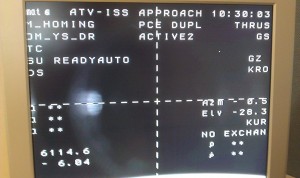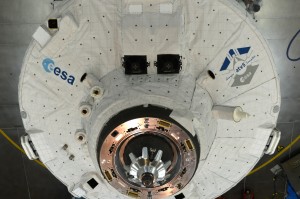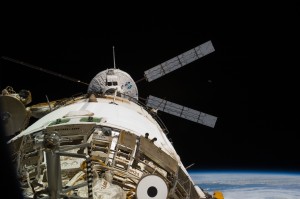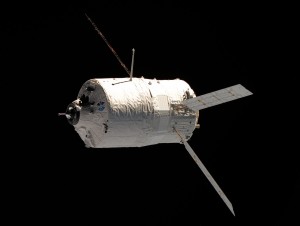Having exhausted the European contributions of our ‘ATV Made-in-‘ series on national contributions to the ATV project, now we look further abroad to our international partners.
The International Space Station, as its name implies, is a collaboration between the USA, Russia, ESA, Canada and Japan, so parts of ATV (which is also part of the International Space Station programme) were supplied by Russia and USA. For no reason at all, let’s start with Russia.
As ATVs dock with the Russian Zvezda module on the International Space Station, they use parts developed by Energia (the S.P. Korolev Rocket and space corporation).
Named after the grandfather of human space flight, Sergei Korolev, the company has been designing and building space hardware since 1946!
ATVs use the Russian docking system and its electronics; these are similar to the systems used on Soyuz and Progress vehicles. The system features a distinctive probe that guides the ATV into the Zvezda service module and captures it for a successful docking.

Simvol video system with space for the Kurs range and range rate information on the bottom right corner before ATV-4 docking
The Kurs radar system allows the astronauts on the Space Station to monitor an ATV’s approach, providing range, and range rate (the rate at which ATV is nearing the Station) in addition to the information provided by the ATV navigation systems and a Station camera.
Lastly, ATV’s refuelling system for the Russian segment of the International Space Station is also supplied by Energia.
Both the docking system and refuelling system are controlled via the RECS (Russian Equipment Control System), which also allows the ATV to connect to Space Station power when docked. The ATV’s refuelling system allows fuel to be pumped from ATV’s tanks to the Russian tanks on the Station. The fuel is used to keep the International Space Station in orbit or to perform Station attitude manoeuvres when ATVs or other vehicles are not able to lend a helping hand.
The ATV Control Centre in Toulouse, France, monitors refuelling operations while the Russian ISS mission control in Moscow (MCC-M) initiates the commands to transfer the liquids and controls the entire operation. The system and tanks are the same as used on the Progress supply ferries. After the refuelling operations, MCC-M purges the pipes to avoid any leftover fuel contaminating the Station.
Lavochkin is a large producer of space hardware supplying the Fregat upper stage of the Soyuz launcher. For ATV, they supplied the deployment mechanism for the Antenna Boom (the little pointy stick thing standing upright in this image), allowing ATVs to communicate via S-band frequencies.
The Antenna Deployable Boom (or ADB) is folded for safety and space during launch and unfolds shortly after launch thanks to Lavochkin, allowing ATV to phone directly to the ISS.




 Automated Transfer Vehicle page
Automated Transfer Vehicle page ATV blog archive
ATV blog archive
Discussion: no comments